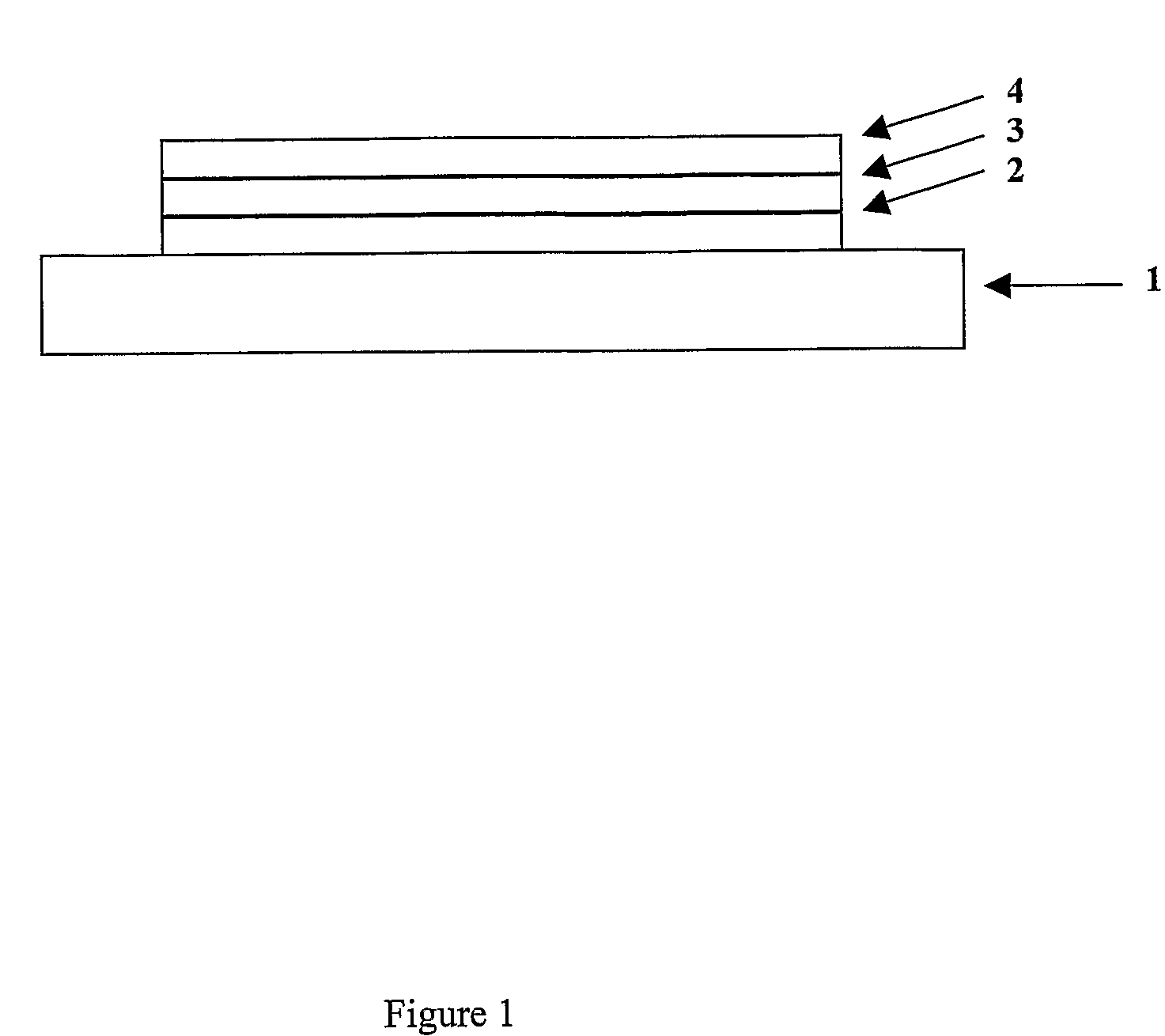Rigid Amines
a technology of amines and amines, applied in the field of amine monomers, can solve the problems of poor performance poor performance of green and red emitters, and host may quench phosphor emission, so as to avoid the possibility of phase separation in blends, improve the lifetime of blue emissive materials, and improve the effect of polymer lifetim
- Summary
- Abstract
- Description
- Claims
- Application Information
AI Technical Summary
Benefits of technology
Problems solved by technology
Method used
Image
Examples
example 1
Monomer Example 1
[0127]Monomer 1 according to the invention, which is shown below, was synthesised according to Scheme 1:
[0128]Monomer 1 was synthesised in a four stage process as set out below.
Stage 1
[0129]
[0130]Phenyl hydrazine hydrochloride (30 g, 0.28 mol), tert-butyl cyclohexanone (42.79 g, 0.28 mol) and acetic acid (600 mL) were added to a round bottom flask, equipped with a nitrogen line and condenser. The reagents were stirred at room temperature for 30 mins and then warmed to 30° C. After 20 mins, the heating was increased to 35° C. and held at this temperature. After 30 mins, the heating was increased to 40° C. for a further 6 hours and then warmed to 70° C. overnight. The reaction mixture was allowed to cool to room temperature and then toluene was added. The organic phase was washed with water, NaHCO3 and finally water. The solvent was evaporated and the product recrystallized from hexane. Yielding 24.29 g (˜55% yield) of desired material.
Stage 2
[0131]
[0132]A 2 L flask e...
polymer example 1
[0151]A copolymer (Polymer l) having 65% F8, 30% DPF, and 5% Monomer 1 was formed by Suzuki polymerisation according to the method described in WO 00 / 53656.
[0152]The HOMO and LUMO of Polymer 1 were measured using cyclic voltametery:
[0153]HOMO level is very deep (similar to F8): 5.52 eV
[0154]LUMO level is shallow (similar to F8): 2.13 eV
[0155]The similarity to F8 suggests that both measured HOMO and LUMO levels are for F8 rather than the Monomer 1.
polymer example 2
[0156]An AB copolymer of 2,5-dioctylbenzene and the repeat unit derived from Monomer 1 (Polymer 2) was prepared by Suzuki polymerisation according to the method described in WO 00 / 53656 and the reaction scheme set out below, to give a polymer having a weight average molecular weight (Mw) of 57000 Daltons:
Device Example (Fluorescent Device)
[0157]A device was formed according to the process set out below.
[0158]Poly(ethylene dioxythiophene) / poly(styrene sulfonate) (PEDT / PSS), available from H C Starck of Leverkusen, Germany as Baytron P® was deposited over an indium tin oxide anode supported on a glass substrate (available from Applied Films, Colorado, USA) by spin coating. Polymer 1 according to the invention was deposited over the layer of PEDT / PSS by spin-coating from xylene solution to a thickness of around 65 nm. A Ba / A1 cathode was formed over polymer 1 by evaporating a first layer of barium to a thickness of up to about 10 nm and a second layer of aluminium barium to a thickness...
PUM
| Property | Measurement | Unit |
|---|---|---|
| wavelength | aaaaa | aaaaa |
| wavelength | aaaaa | aaaaa |
| wavelength | aaaaa | aaaaa |
Abstract
Description
Claims
Application Information
 Login to View More
Login to View More - R&D
- Intellectual Property
- Life Sciences
- Materials
- Tech Scout
- Unparalleled Data Quality
- Higher Quality Content
- 60% Fewer Hallucinations
Browse by: Latest US Patents, China's latest patents, Technical Efficacy Thesaurus, Application Domain, Technology Topic, Popular Technical Reports.
© 2025 PatSnap. All rights reserved.Legal|Privacy policy|Modern Slavery Act Transparency Statement|Sitemap|About US| Contact US: help@patsnap.com



